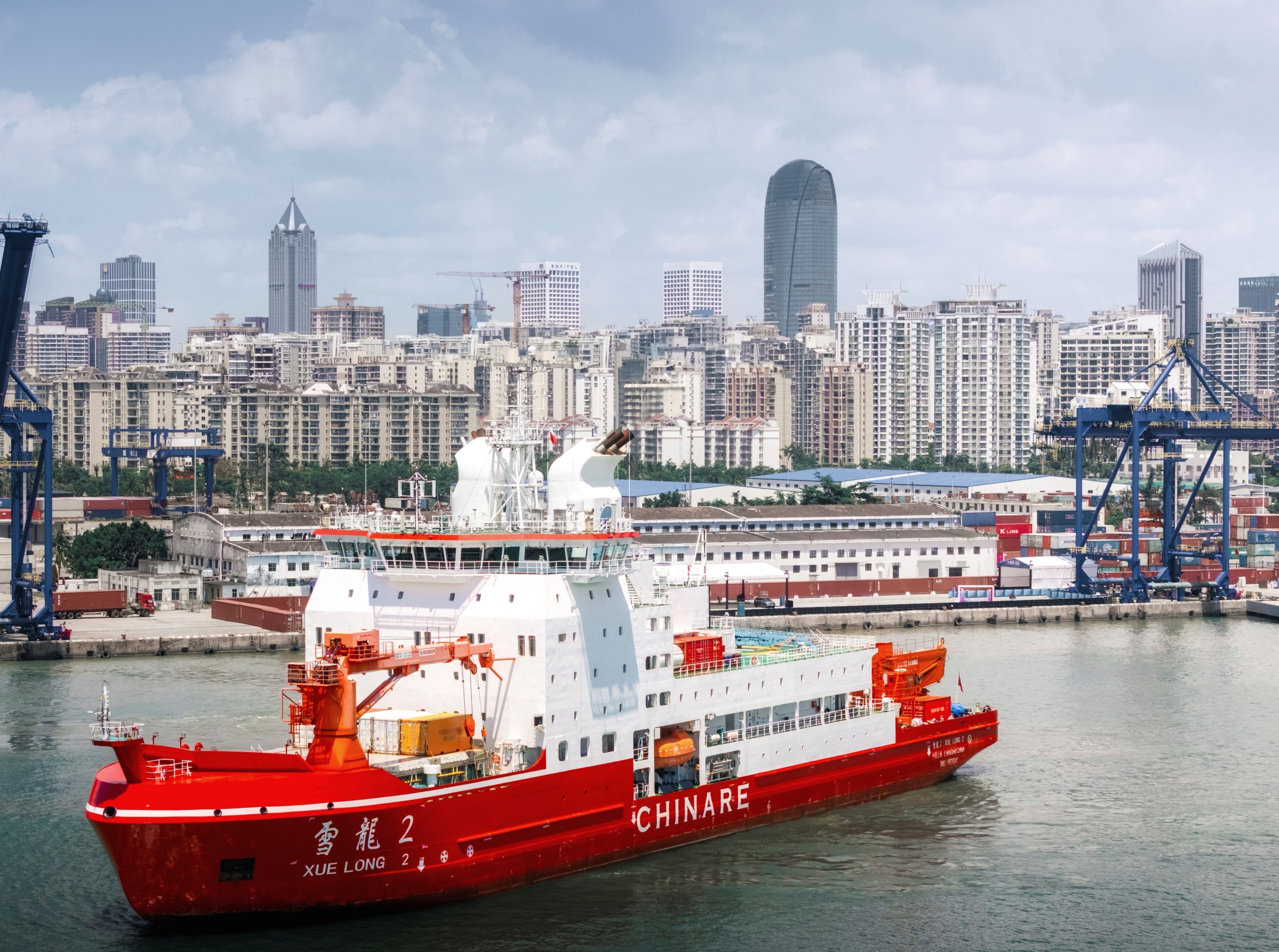
The Canadian military confirmed to Newsweek that it is “actively monitoring” the Chinese icebreaker Xue Long 2, which was tracked entering Arctic waters from East Asia last week.
“The top priority of the Canadian Armed Forces (CAF) is the defense of Canada and Canadians, and we will continue to conduct activities needed to detect, deter, and defend against potential threats in, over, and approaching Canada,” the Canadian Joint Operations Command said.
Newsweek reached out to China‘s Foreign Ministry and Canada’s Coast Guard via email for comment.
Why It Matters
China asserts itself as a “near-Arctic state” and an important stakeholder in Arctic affairs. In recent years, it has gradually expanded its presence in the region, including deploying its icebreaking fleet and conducting scientific research that could have military applications.
The Xue Long 2‘s voyage comes amid growing Arctic rivalry between the United States and China. U.S. President Donald Trump expressed interest in acquiring Greenland, a Danish island rich in mineral and energy resources, and one that counts China as a key economic partner.
Canada, Washington’s key NATO ally, conducted an “Arctic awareness and sovereignty mission” in July of last year, during which one of its warships shadowed the Arctic-bound Xue Long 2, China’s first domestically built icebreaker capable of conducting research.
VCG/VCG via AP
What To Know
Using data from the vessel-tracking website MarineTraffic, Steffan Watkins, a research consultant based in Canada, said the Canadian Coast Guard vessel CCGS Sir Wilfrid Laurier shadowed the Xue Long 2 at a distance as it sailed from Japan toward Alaska.
A Newsweek map shows that the Xue Long 2 departed East China on July 6 and was operating in the Chukchi Sea, located south of the Arctic Ocean and north of the Bering Strait, on July 18, following a transit past the west and north coasts of Japan and Russia’s Far East.
As of Tuesday, the Xue Long 2 was not in Canadian territorial waters, which extend up to 13.8 miles from the coastline, the Canadian Joint Operations Command told Newsweek.
According to the Chinese company COSCO Shipping Heavy Industry, the icebreaker completed a 10-day, high-intensity maintenance on June 29 and returned to its polar expedition base in Shanghai, as it prepared for an Arctic scientific expedition mission scheduled for this month.
The Sir Wilfrid Laurier, a multi-purpose ship capable of icebreaking, was deployed to the North Pacific last month for a patrol aimed at deterring illegal, unreported, and unregulated (IUU) fishing. According to the map, it departed Hakodate Port in northern Japan on July 8.
The ship, one of seven Canadian icebreakers scheduled to deploy for the Coast Guard’s Arctic summer operations between June and November, was tracked near Nome, Alaska, on July 19, as it shifted its mission to icebreaking and scientific support in the Arctic.
While the voyages of the Chinese and Canadian vessels “unmistakably paralleled” each other during their transit to the Arctic, as described by Watkins, the Canadian Coast Guard denied that the Sir Wilfrid Laurier was shadowing the Xue Long 2, according to CBC News.
Meanwhile, ADSBexchange, an online platform that collects real-time flight data, tracked a Canadian CP-140 patrol aircraft launching from Alaska and heading toward the Chinese vessel in the Arctic, Watkins revealed on Bluesky on Sunday.
Watkins told Newsweek that only one patrol aircraft appears to have been deployed to Anchorage, flying nine-hour sorties every day or every other day. The Canadian Joint Operations Command confirmed to Newsweek that a CP-140 aircraft was based in Alaska.
Canada has been deploying military patrol aircraft to Alaska for at least the past two years to monitor Chinese research vessels in the Arctic; however, such missions have not been made public.
“Canadians should be aware and appreciate what the air force does,” Watkins said.
What People Are Saying
The Canadian Joint Operations Command said in a statement to Newsweek on Tuesday: “Competitors are exploring Arctic waters and the seafloor, probing our infrastructure, and collecting intelligence using dual-purpose research vessels and surveillance platforms. The [Canadian Armed Forces] will continue to actively monitor the Xue Long 2 so long as it continues to operate near Canadian territorial waters.”
Steffan Watkins, a research consultant based in Canada, told Newsweek on Tuesday: “I’m sure some of [Chinese research vessel] deployments to the Pacific are academic-research related, but like American and Russian research vessels, I presume they’re conducting some of that ‘research’ for their military; whether that’s deploying or retrieving sensors, mapping undersea cables, collecting intelligence, measuring the salinity of the water, or other tasks.”
What Happens Next
According to Watkins, Canada is expected to receive the first of its 16 P-8A patrol aircraft, each equipped with a long-range radar and high-resolution imaging and detection system, in 2026 and achieve full operational capability by 2033 for monitoring vessels of interest.
